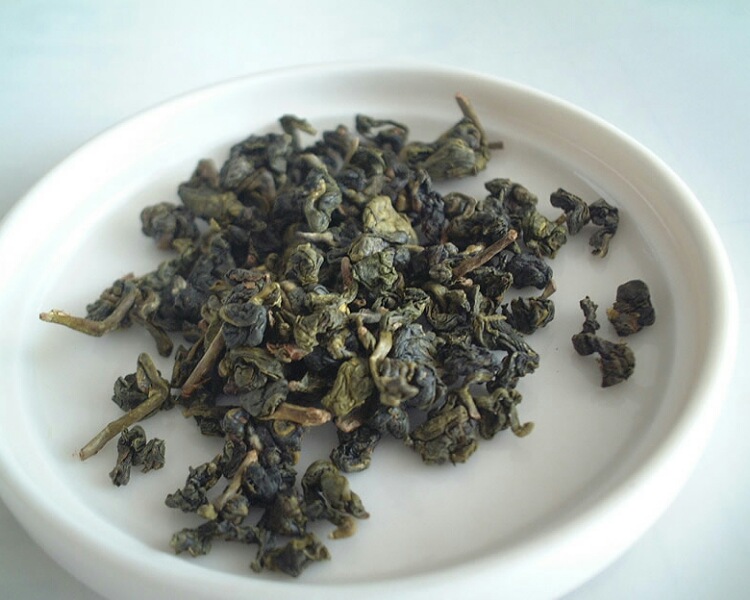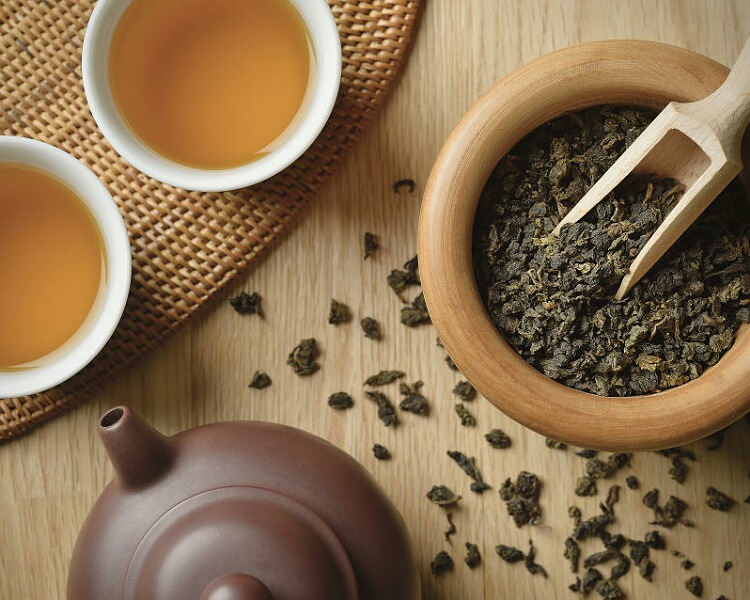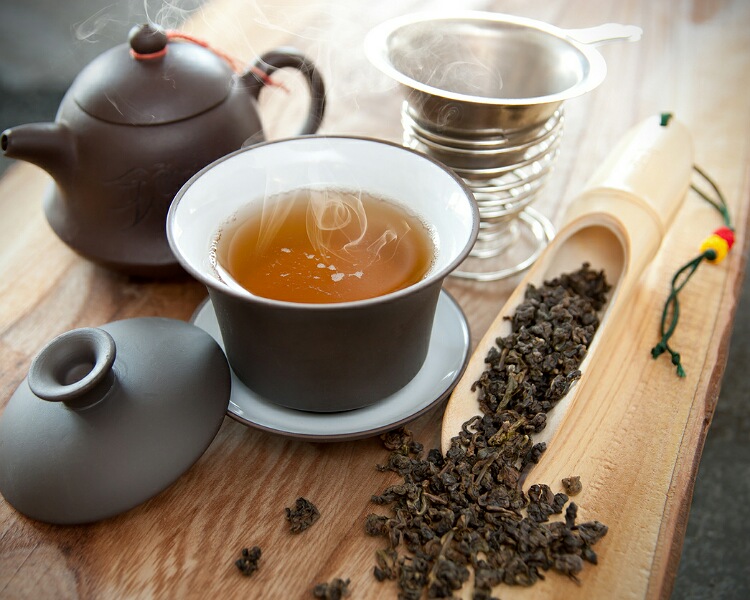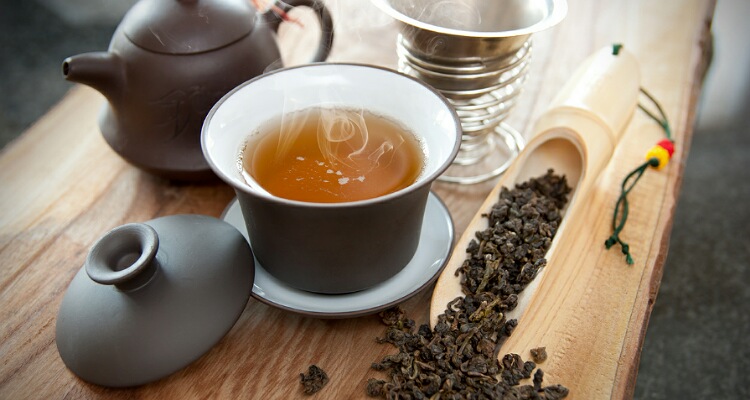Oolong is a type of traditional Chinese tea. It is a true tea from the tea plant but the processing is different. Therefore, the flavor and experience are unique. It also has a lot of health benefits. More on it is below.
Oolong tea
Oolong tea is made from the leaves of the same tree plant from which dark or black or green tea is made. The plant is called Camellia sinensis. But the way the tea leaves are put through the processing process is different.
In green tea making, there is no oxidation process. Whereas in the making of dark or black tea, the tea leaves are first crushed and then exposed to air. The crushing increases oxidation due to more surface area.
And in Oolong tea manufacture, the tea leaves are dried in the sun before they are bruised to get only partial oxidation. Later, it is curled and twisted. Most of the tea plants that bear the leaves for this tea are of a unique and different variety.

This tea is highly popular in South China and also amongst these Chinese ex-pats in South East Asia. Depending on the horticulture and processing method, the tea can have a sweet and fruity flavor with honey aromas.
Or it might be of woody or thick flavor with roasted aromas, or green and fresh but with a complex aroma. The most famous and priced of these teas are those that are from the Wuyi mountainous range of northern Fujian. The one from Da Hong Pao is particularly famous.
Nutritive value
Oolong shares with its cousins, black and green tea, a lot of nutrients. It has vitamins, minerals, and healthy antioxidants. When one brews this tea, one cup of the tea has calcium, potassium as well as magnesium in it.
Every cup has 38 mg of caffeine. This is higher than that found in green tea which is about 29 mg. But it is less than that in black tea.

Additionally, it also has antioxidants like the other tea types. These are polyphenols and include thearubigins, theaflavins, and EGCG. The health benefits are mainly due to these antioxidants. Moreover, it has L-theanine.
This is an amino acid that causes a boost to cognition and causes relaxation. This tea also has acylated flavonoid tetraglycosides, called teaghrelins.
The name comes from the fact that they bind to ghrelin receptors in the body. These are distributed in the brain and other tissues. They are responsible for energy expenditure, fat accumulation, and also appetite regulation.
Health benefits
This tea has a role in protecting from diabetes. It improves insulin resistance and also causes a fall in body inflammation. This is an extrapolation from studies done on green and black tea.
But no specific research in this matter has been done on oolong. Like the other tea types, this tea also can assist in the maintenance of heart health. It lowers cholesterol and relaxes the blood vessels. In one study, 76k Japanese men were studied.
Each of them had at least 240 ml of tea made from oolong leaves daily. Their risk of heart disease was 61% less compared to those who did not have this beverage. Stroke risk was also less.

The lower caffeine content makes it a safe drink for those who have high blood pressure. It also prevents obesity and can assist in weight losing measures.
Animal studies have also shown that oolong can increase fat oxidation and hence aid in weight loss. It has a specific role to boost brain health and memory. It increases focus and cognition. The antioxidants also prevent certain cancer.
Read more: Caffe Mocha: origin, nomenclature, recipe, and concentration benefits!
The tea also improves bone and teeth strength. One study has also demonstrated the ability of this tea to relieve the symptoms of mild to moderate atopic dermatitis.
